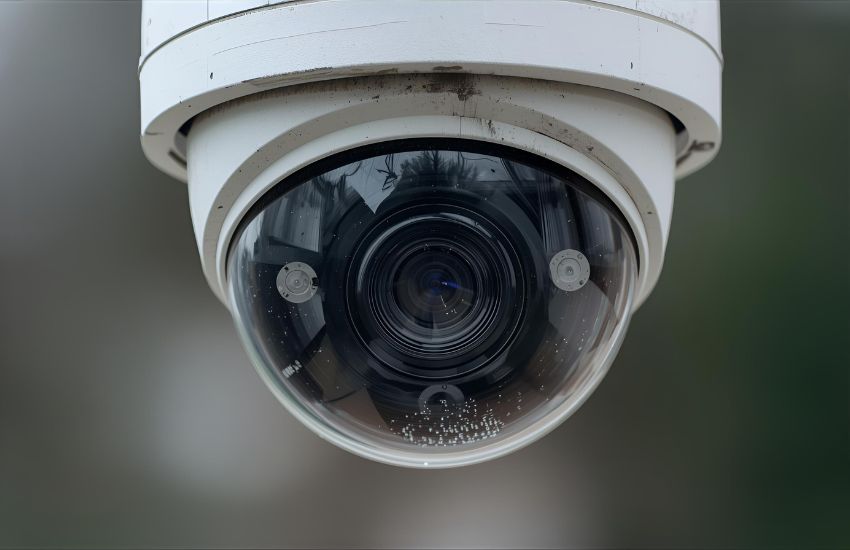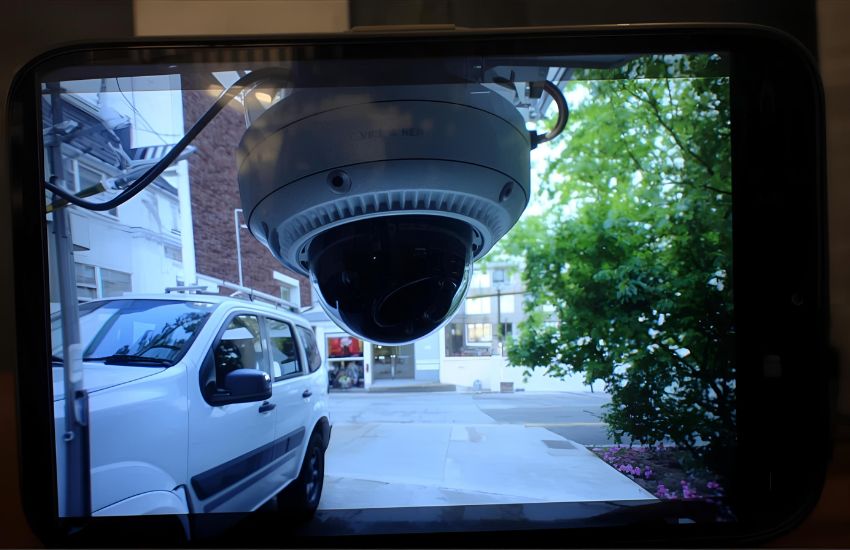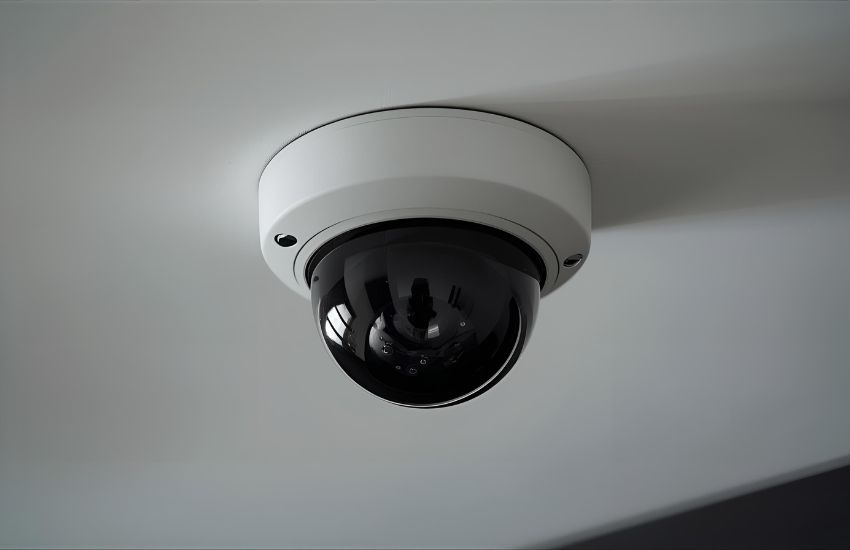A blank screen on your CCTV camera can be both frustrating and alarming, especially when you rely on your security camera for constant surveillance. When the display shows no image, you might immediately suspect a camera failure—but the root cause could lie anywhere from the power supply to the cable connection, or even an overlooked setting on your DVR.
If your CCTV camera shows no picture, first check power supply and cable connections. Inspect the BNC and power adapters for damage or loose fittings. Test the cable quality and replace faulty ones. Adjust camera settings and ensure compatibility with your DVR. Restart the system to reset connections and restore a clear image display.
In this blog, you’ll learn expert troubleshooting techniques to diagnose and resolve CCTV image problems. From inspecting the power supply and verifying camera connections to testing display channels and examining your CCTV camera‘s settings, we’ll walk you through proven solutions that will help you restore your security footage quickly and effectively.
Common Causes of Video Loss and Black Screen Issues in CCTV Cameras

When your CCTV camera system suddenly stops displaying footage or the screen turns completely black, it’s important to identify the root cause without delay. A black screen or interrupted image display can compromise your surveillance efforts and leave critical areas unmonitored. Let’s explore some frequent causes and the corresponding solution for each.
1. Faulty Power Supply or Connection
One of the most common CCTV issues involves power disruption. If your camera shows no image or a black screen, it could be due to a faulty power adapter, loose connector, or damaged power cables. Always verify that your camera is connected to a stable power source and that no disconnect has occurred.
Solution: Test the power supply with a working camera and inspect all power connectors. Replace any damaged components.
2. Damaged or Disconnected Video Cable
The video cable is essential for transmitting the video signal from the camera to your DVR or monitor. A damaged coax cable or a loose connector can instantly disrupt the image display.
Solution: Ensure all video connectors are tightly secured and replace worn-out cables.
3. Incorrect Input or Channel Setting
If you’re using an analog dome camera or similar device, incorrect input or channel setting on your monitor or DVR may result in a black screen.
Solution: Cycle through the input sources or verify DVR settings to ensure the correct camera feed is selected.
4. Faulty Camera Hardware
A bad camera or malfunctioning internal components can lead to intermittent or total video loss. This is especially true for aging devices or those exposed to harsh weather.
Solution: Swap in a working camera to confirm the issue. If confirmed, replace the bad camera.
5. Improper Configuration or Software Glitch
Sometimes, misconfigured settings or a software error within the DVR/NVR leads to display issues.
Solution: Reset the device to factory settings or perform necessary updates to restore full image display.
By applying these troubleshooting CCTV practices and following systematic troubleshooting steps, you can resolve most display-related problems and restore a reliable camera system setup.
See more about…HD CCTV Security Cameras are NOT Better than Network IP Cameras
Troubleshooting CCTV Connection Problems, Power Supplies, and DVR Compatibility

Maintaining uninterrupted footage from your surveillance system depends heavily on stable power delivery, proper cabling, and compatible recording devices. When any part of this chain fails, your CCTV systems may experience black screens, flickering images, or missing recordings. Here’s how you can approach troubleshooting these key areas effectively.
Check and Test Power Supplies
A malfunctioning power cable or unstable power supply is one of the most common problems in CCTV setups. Before replacing equipment, inspect your power connections to confirm the power supply is working.
Solution: Use a multimeter to test voltage output or swap the power source with one from a known good camera. If the footage returns, the original power supply may need replacement.
Investigate Camera and Cable Connections
Loose or degraded cables—especially over long cable runs—can interrupt signals. A bad cable, worn-out BNC connector, or poor-quality wiring may cause flickering or total video loss.
Solution: Inspect all cabling for visible damage, replace bad cables, and verify BNC connectors are properly seated. If needed, swap out the cable and test with a different camera.
Confirm DVR and Camera Compatibility
Not all DVRs support every video format, and compatibility issues can result in blank screens or distorted footage. Ensure the DVR supports the image sensor and resolution of your camera.
Solution: Review your DVR’s technical specs and manual, paying close attention to supported video formats. If necessary, reset the DVR to default settings or check for firmware updates to improve compatibility.
Address IP and PoE Configuration
For IP CCTV systems, improper network setup or misconfigured PoE switches may cause the camera feed to fail. Connectivity issues often stem from incorrect IP assignments or faulty switch ports.
Solution: Check the video stream through network tools, and confirm that the PoE switch is delivering power and data. Reset IP settings if needed and reconnect the devices.
Assess Camera Hardware
Hardware issues like a misaligned lens or damaged image sensor can also affect clarity or prevent recording altogether.
Solution: Examine the lens for dirt or damage and confirm alignment. If the issue persists, consider replacing the camera hardware.
By following these structured steps, you can systematically resolve power, connection, and compatibility issues in your CCTV setup, ensuring stable and high-quality surveillance footage.
See more about…CCTV Camera Pros Coupon Code
How Camera Settings and Cable Quality Affect Security Camera Image Display

The quality of your security camera‘s image display is heavily influenced by both camera settings and the condition of your cables. If the image is distorted or absent, the first step you should take is to reset the camera to its factory defaults as outlined in the manual. This often resolves issues caused by incorrect configurations or incompatible settings that may disrupt compatibility with your DVR or monitor. Using a known good cable is essential because a bad cable can severely degrade signal quality, leading to flickering or no image at all. Pay close attention to your BNC connectors, as loose or damaged connectors are frequent culprits behind poor image display. Similarly, the lens condition and alignment can affect clarity; a dirty or misaligned lens will reduce image sharpness. In systems relying on Ethernet connections or adapters, ensuring that all components are compatible with each other is vital to maintaining signal integrity. Should you suspect a bad cable or faulty BNC connector, replacing them promptly can restore a clear video feed. Finally, if the camera and recording equipment are not properly matched in terms of resolution or signal type, compatibility issues may arise that no simple reset can fix. Taking time to verify these settings and cable conditions can significantly improve your camera’s image quality and overall surveillance reliability.
See more about…POS Text Camera
Conclusion
The clarity and reliability of your security camera’s image display depend significantly on correct camera settings and the quality of cables and adapters used. If you experience issues such as no image or poor video quality, performing a reset according to the camera’s manual can often resolve misconfigurations that affect compatibility with your DVR or monitor. Using a known good cable is crucial because a bad cable or faulty BNC connector can cause signal loss or distortion. Ensuring that all adapters are compatible with your camera system prevents unexpected interruptions. Additionally, inspecting and cleaning the lens will help maintain image sharpness. While checking cables, don’t overlook the condition of the BNC connectors as well; a loose connection can disrupt the video feed. If problems persist, swapping out cables or adapters for ones verified to be in good condition can often restore proper function. Attention to these details will ensure your camera system delivers clear and consistent surveillance footage.
See more about…HD CCTV Security Cameras are NOT Better than Network IP Cameras
Frequently Asked Questions (Troubleshooting a CCTV Camera With No Picture: Expert Fixes for Clear Image Display)
How to improve CCTV camera image quality?
To improve CCTV camera image quality, ensure proper lighting, clean camera lenses regularly, and position cameras at optimal angles. Adjust resolution settings on the DVR/NVR and use higher-quality cables for stable signals. Upgrade to HD or IP cameras if possible. Enable features like WDR or IR for low-light conditions, and ensure regular maintenance for best performance.
How to troubleshoot a CCTV camera?
To troubleshoot a CCTV camera, first check the power supply and ensure cables are connected securely. Inspect the DVR/NVR settings and confirm the camera is recognized. Clean the lens for clear images and test video output on another port or monitor. Update firmware if needed. Replace faulty cables or hardware if problems persist.
How to make a CCTV image clearer?
To make a CCTV image clearer, adjust the camera’s focus, resolution, and brightness settings. Ensure proper lighting in the area and clean the camera lens regularly. Use higher resolution cameras or upgrade DVR/NVR settings. Check cable connections for signal quality and reduce interference. Adding infrared lights can also improve clarity in low-light conditions.
Why is my CCTV camera on but no picture?
If your CCTV camera is on but showing no picture, it may be due to loose or damaged cables, incorrect input selection, power supply issues, or a faulty DVR/NVR connection. Check video cables, power adapters, and ports. Also, ensure the camera lens and settings are correct. If unresolved, the camera or DVR may need repair or replacement.
